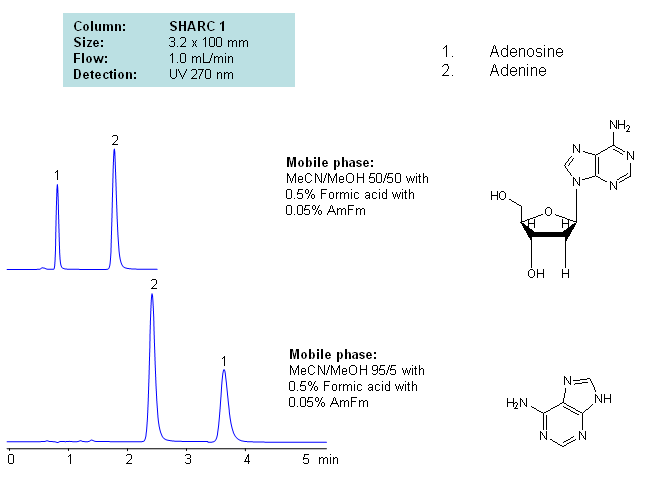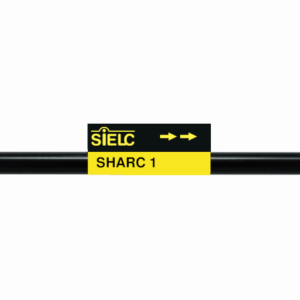
Application Notes: Nucleosides are glycosylamines consisting of a nucleobase linked to a ribose or a deoxyribose sugar. Nucleoside are building blocks for DNA and RNA. These compounds are very polar in nature and contain groups available for hydrogen bonding interactions. Method for separation of adenine and adenosine were developed using a hydrogen-bonding method. There is a strong correlation between retention time for adenine/adenosine and the mobile phase composition, which consists of acetonitrile and methanol. Order of elution for compounds depends on the amount of acetonitrile and methanol. Furthermore, ellution of adenine and adenosine can be reversed based on the composition of the mobile phase. Our method is compatible with LC/MS and preparative chromatography.
| Column | Sharc 1, 3.2×100 mm, 5 µm, 100A |
| Mobile Phase | MeCN/MeOH |
| Buffer | AmFm, Formic acid |
| Flow Rate | 1.0 ml/min |
| Detection | UV, 270 nm |
| Class of Compounds |
Drug, Acid, Hydrophilic, Ionizable, Vitamin, Supplements |
| Analyzing Compounds | Adenosine, Adenine |
Application Column
SHARC 1
The SHARC™ family of innovative columns represents the first commercially available columns primarily utilizing separation based on hydrogen bonding. SHARC stands for Specific Hydrogen-bond Adsorption Resolution Column. Hydrogen bonding involves an interaction or attraction between a bound hydrogen atom and molecules containing electronegative atoms, such as oxygen, nitrogen, and fluorine.
Select optionsAdenosine





